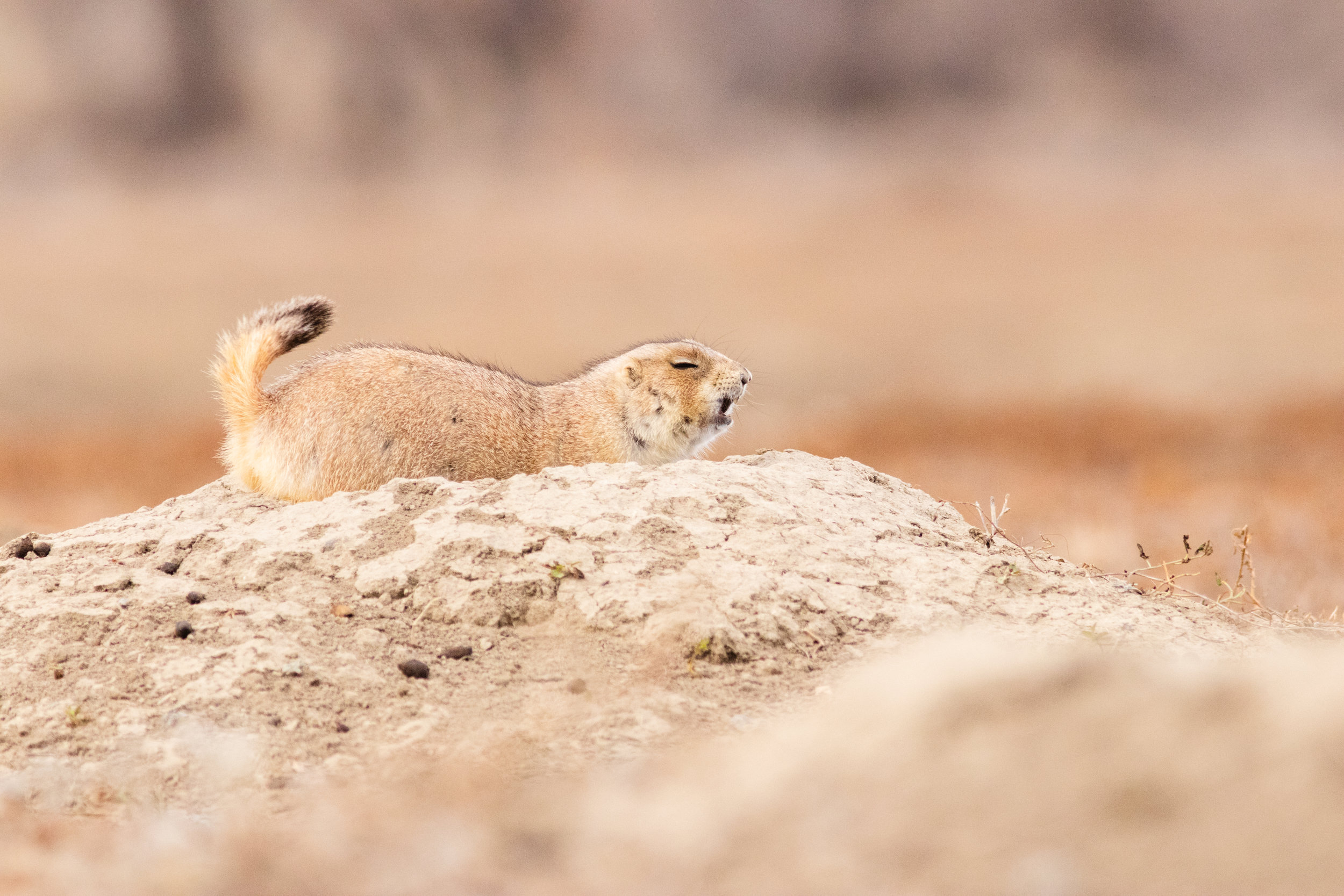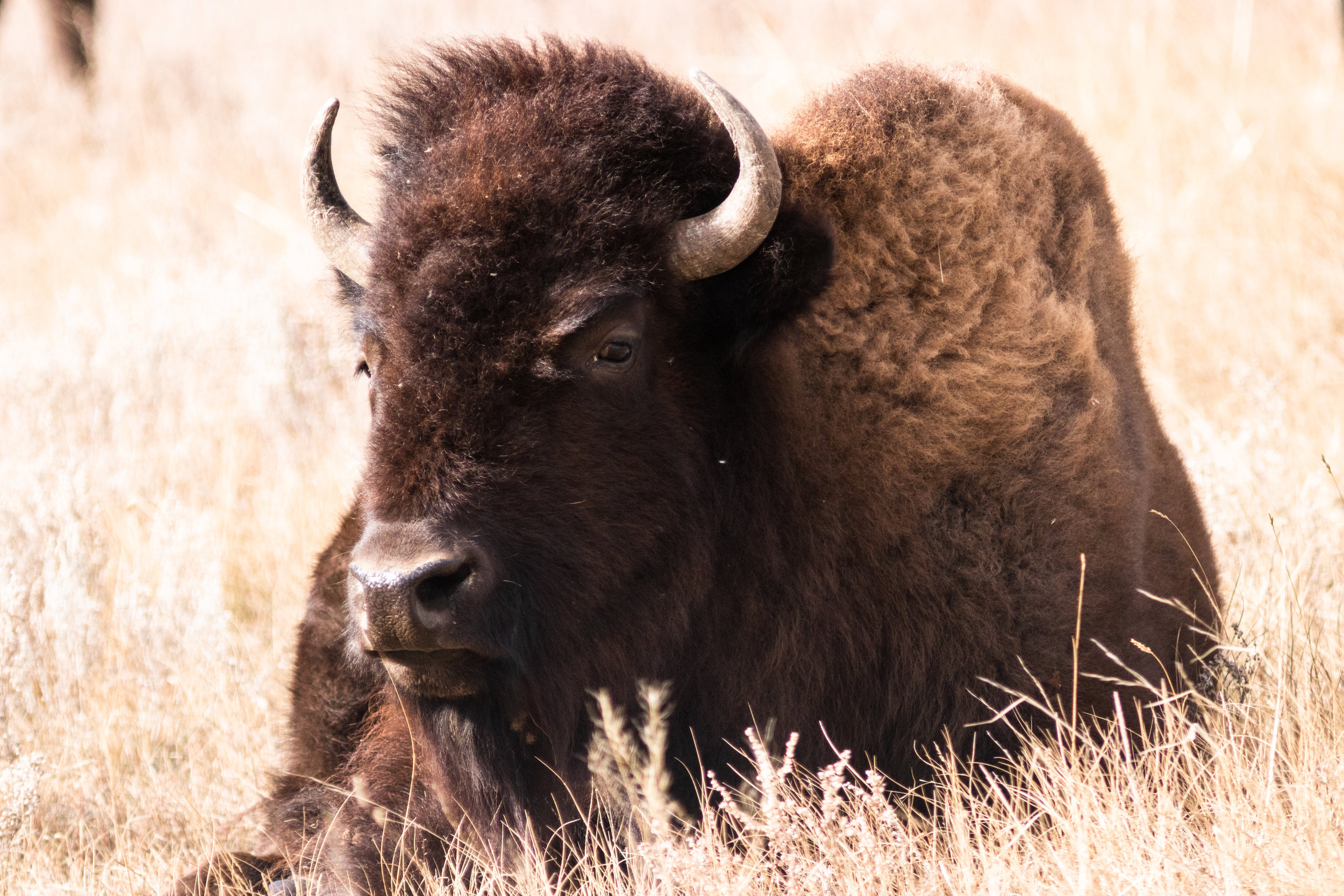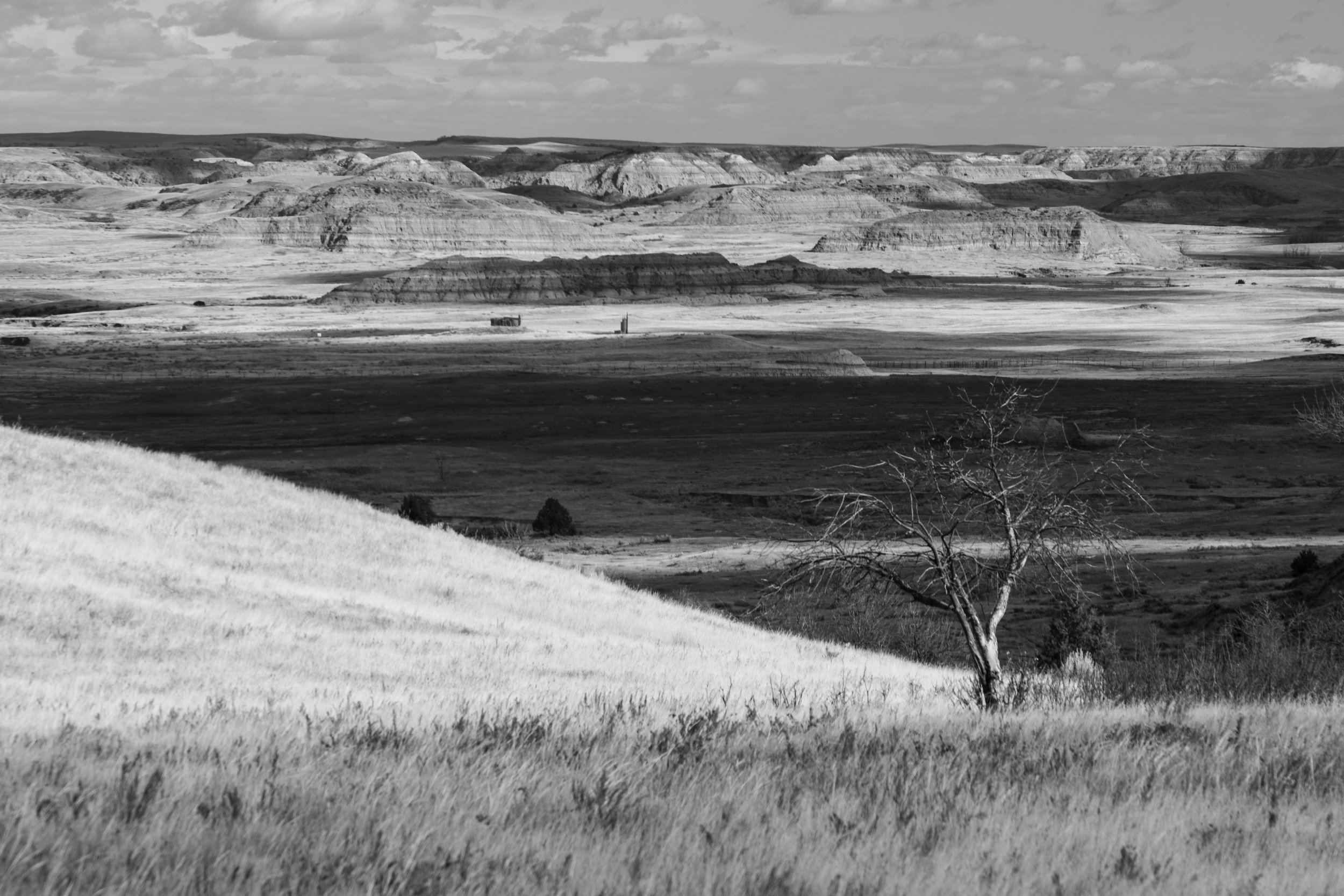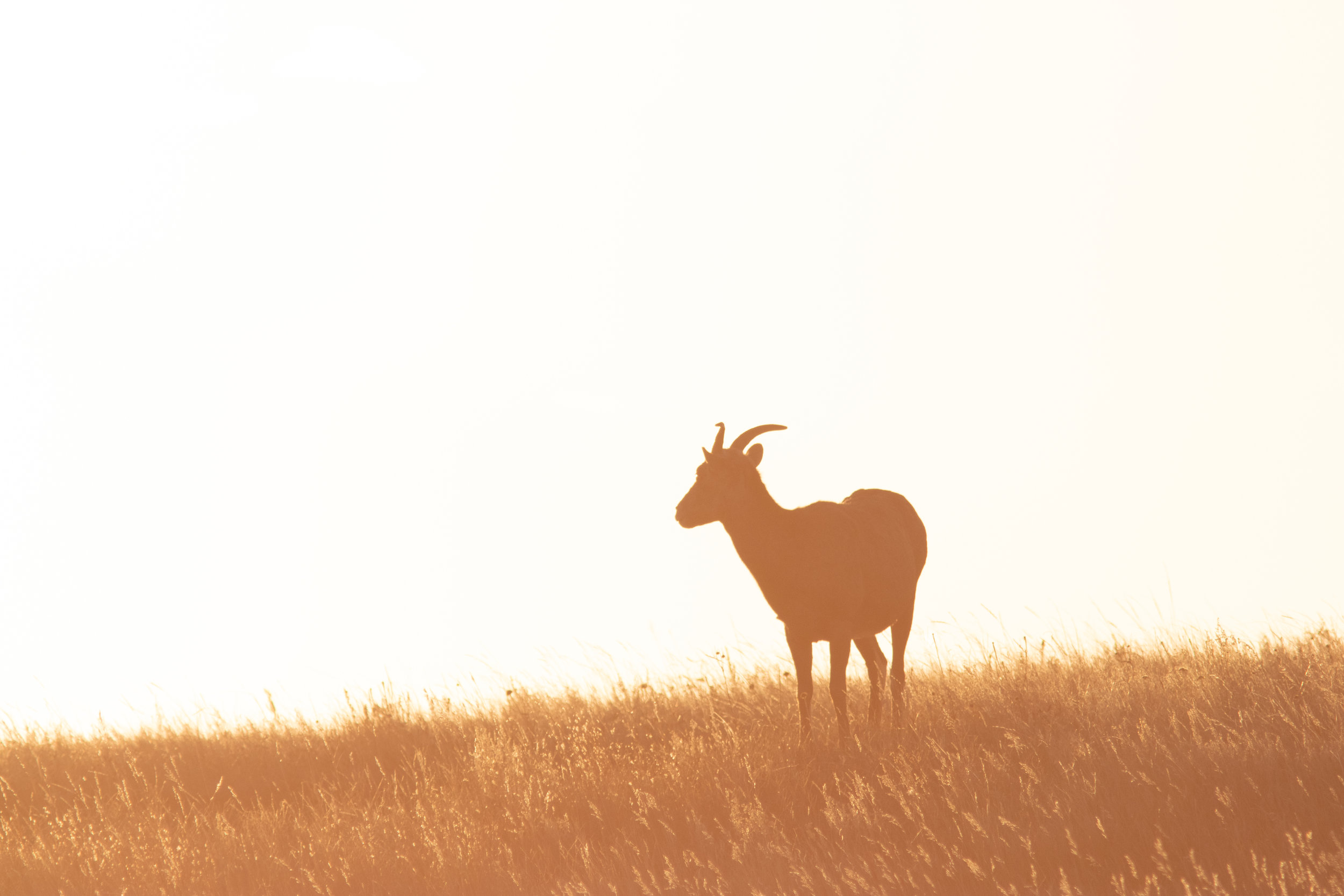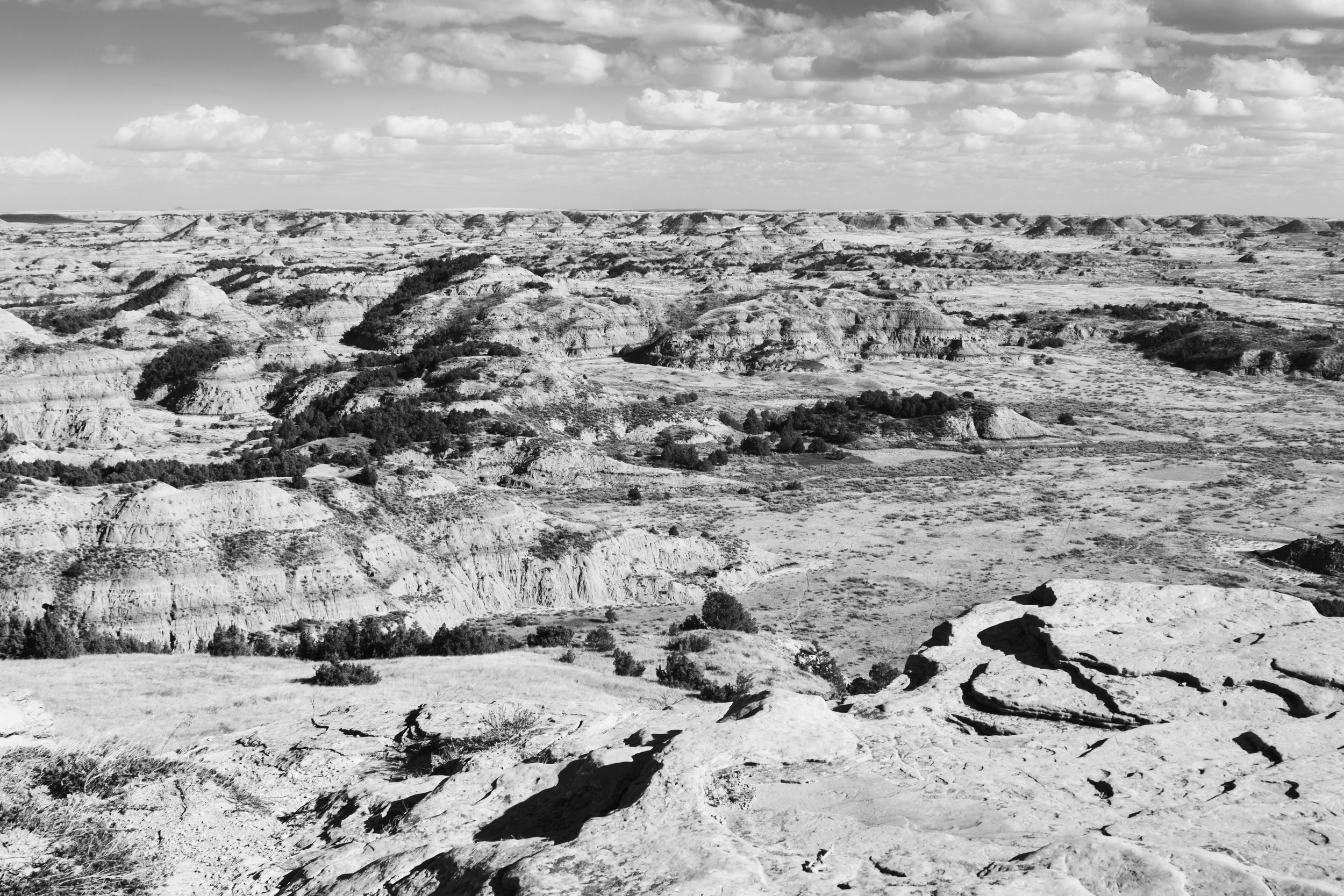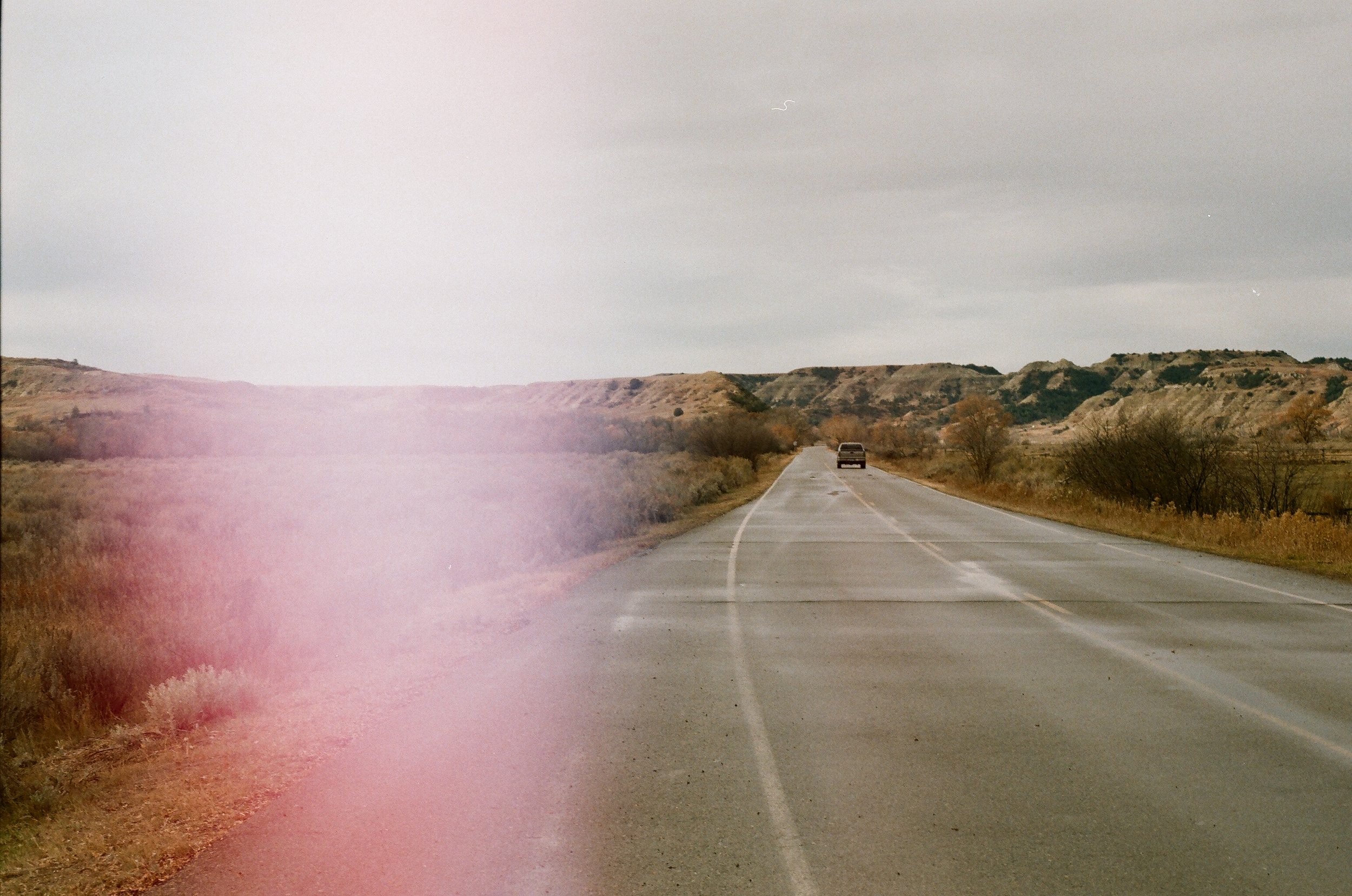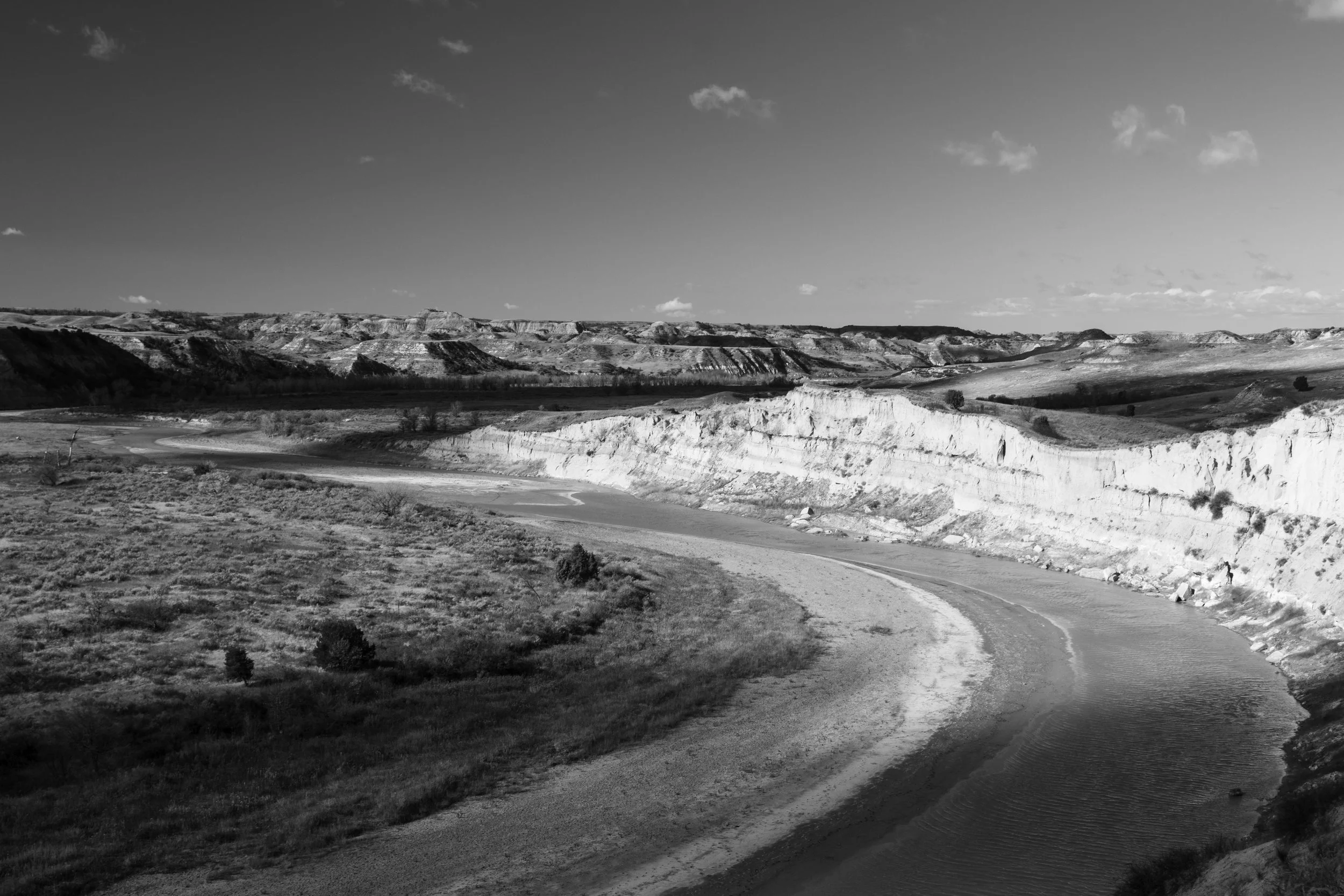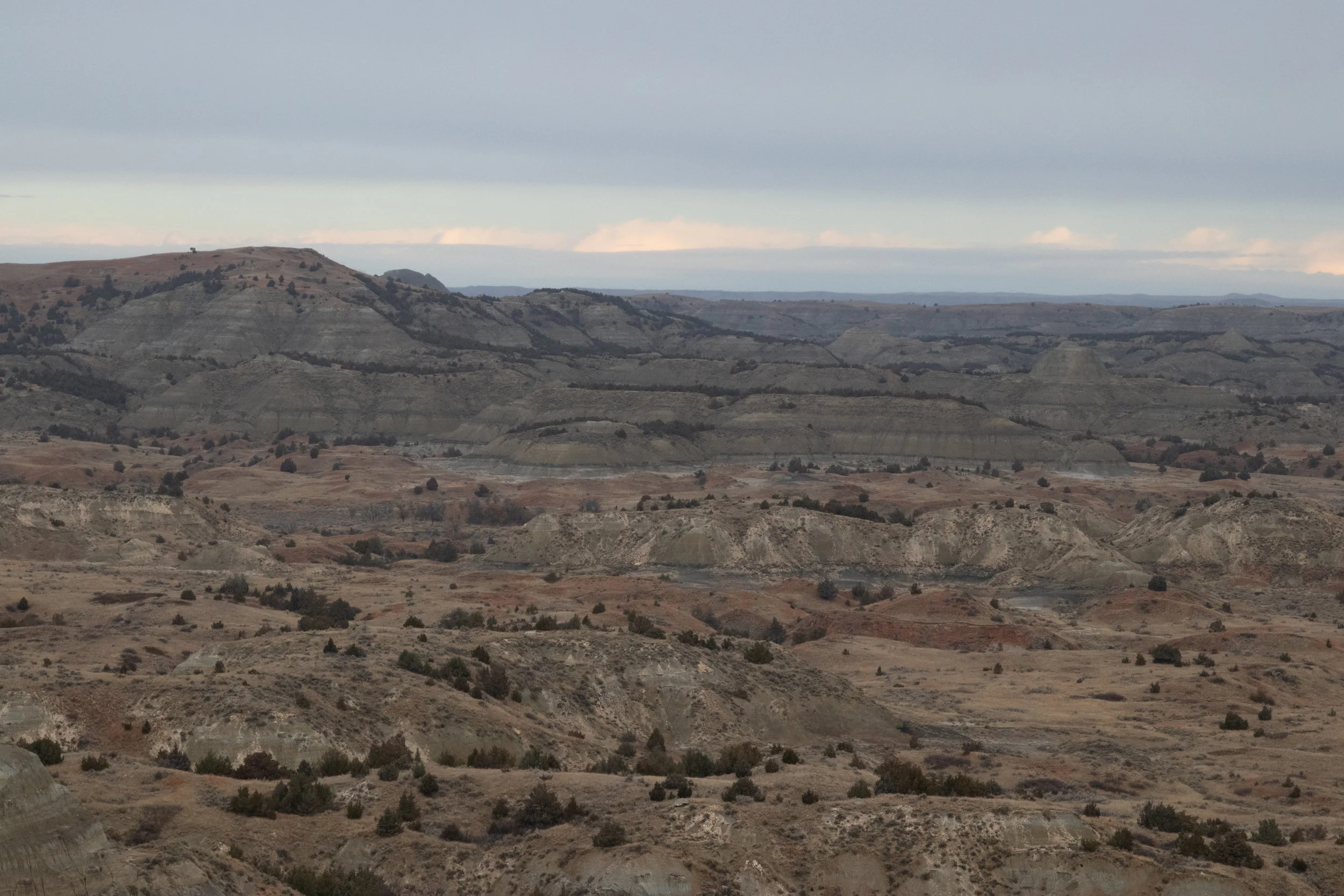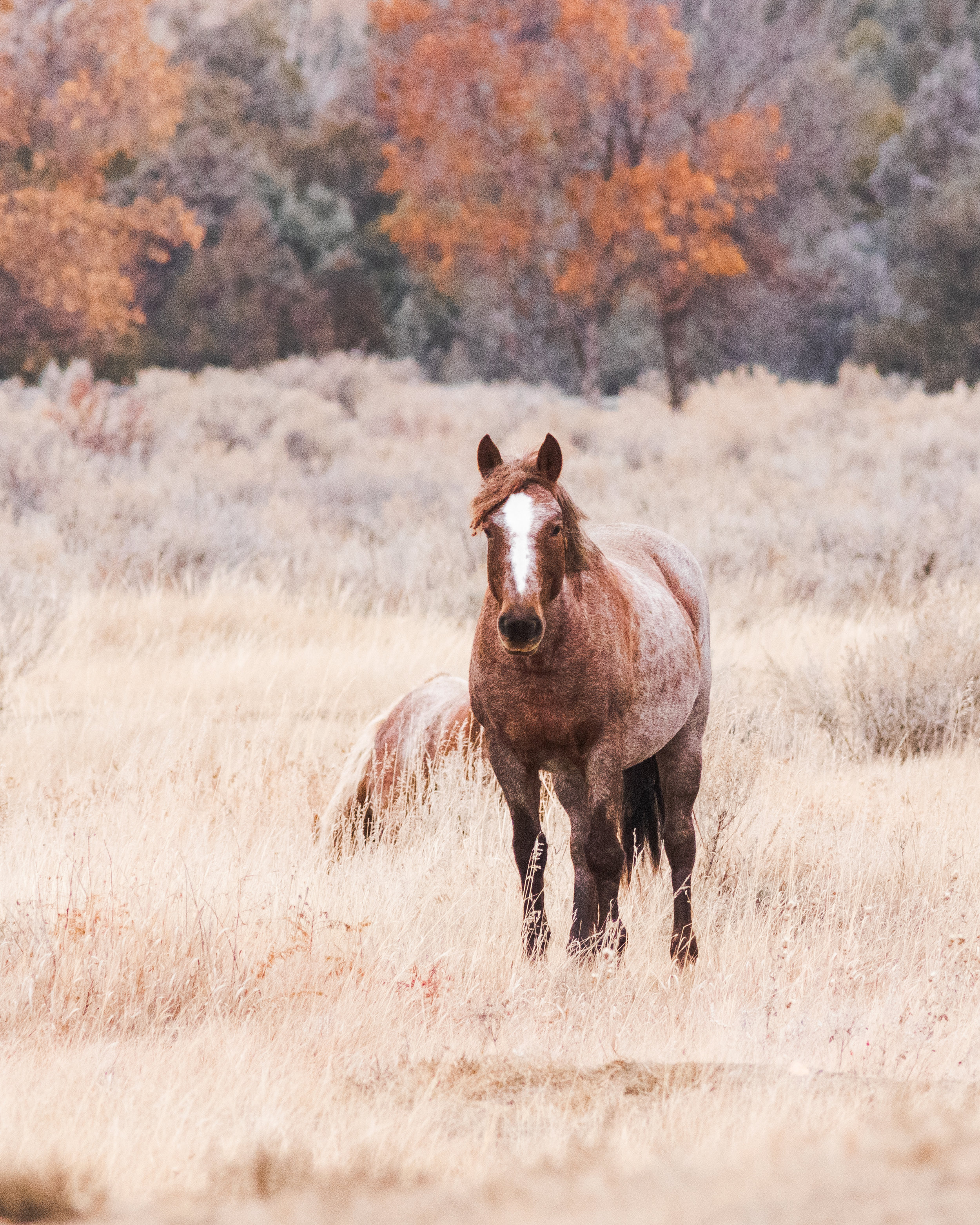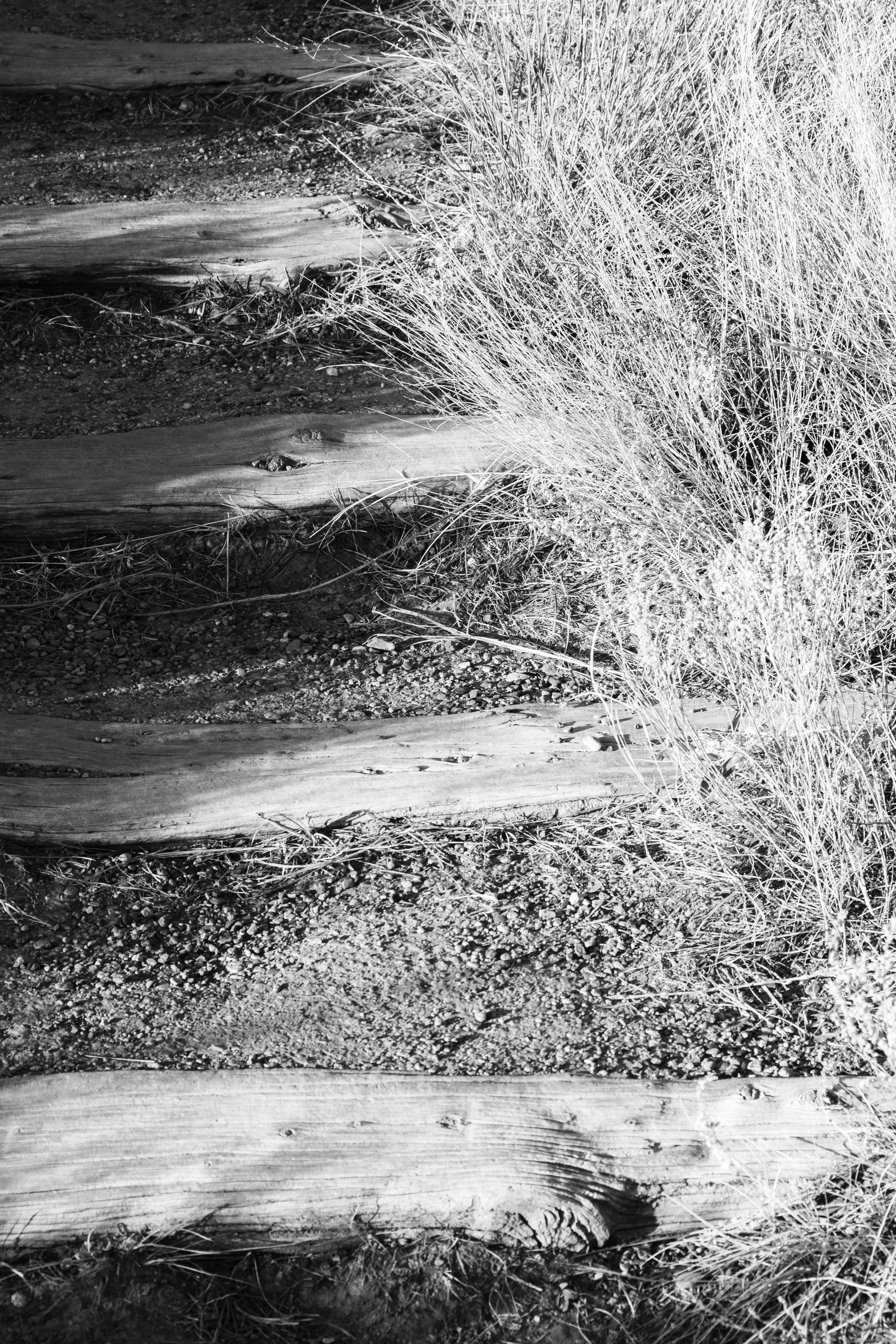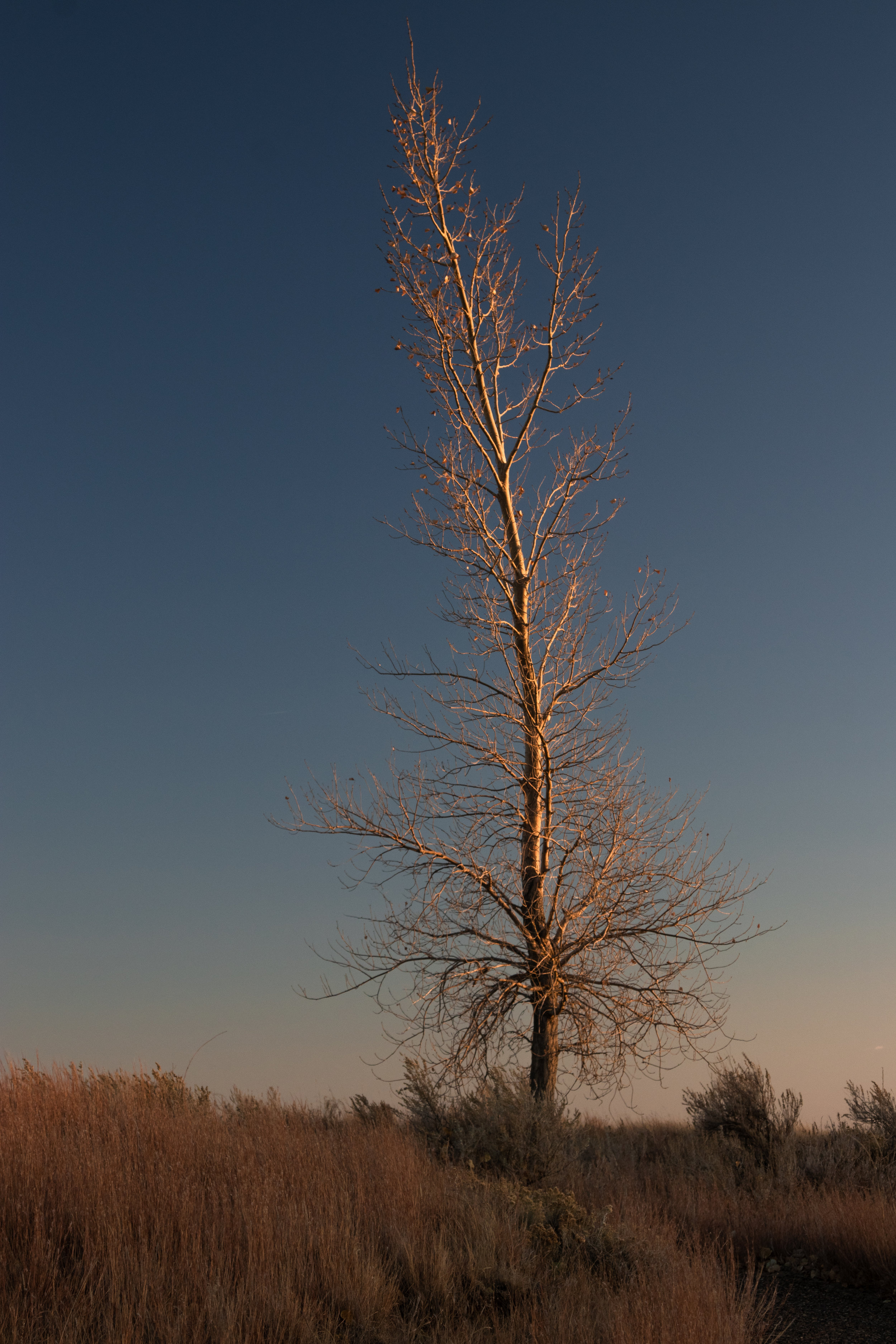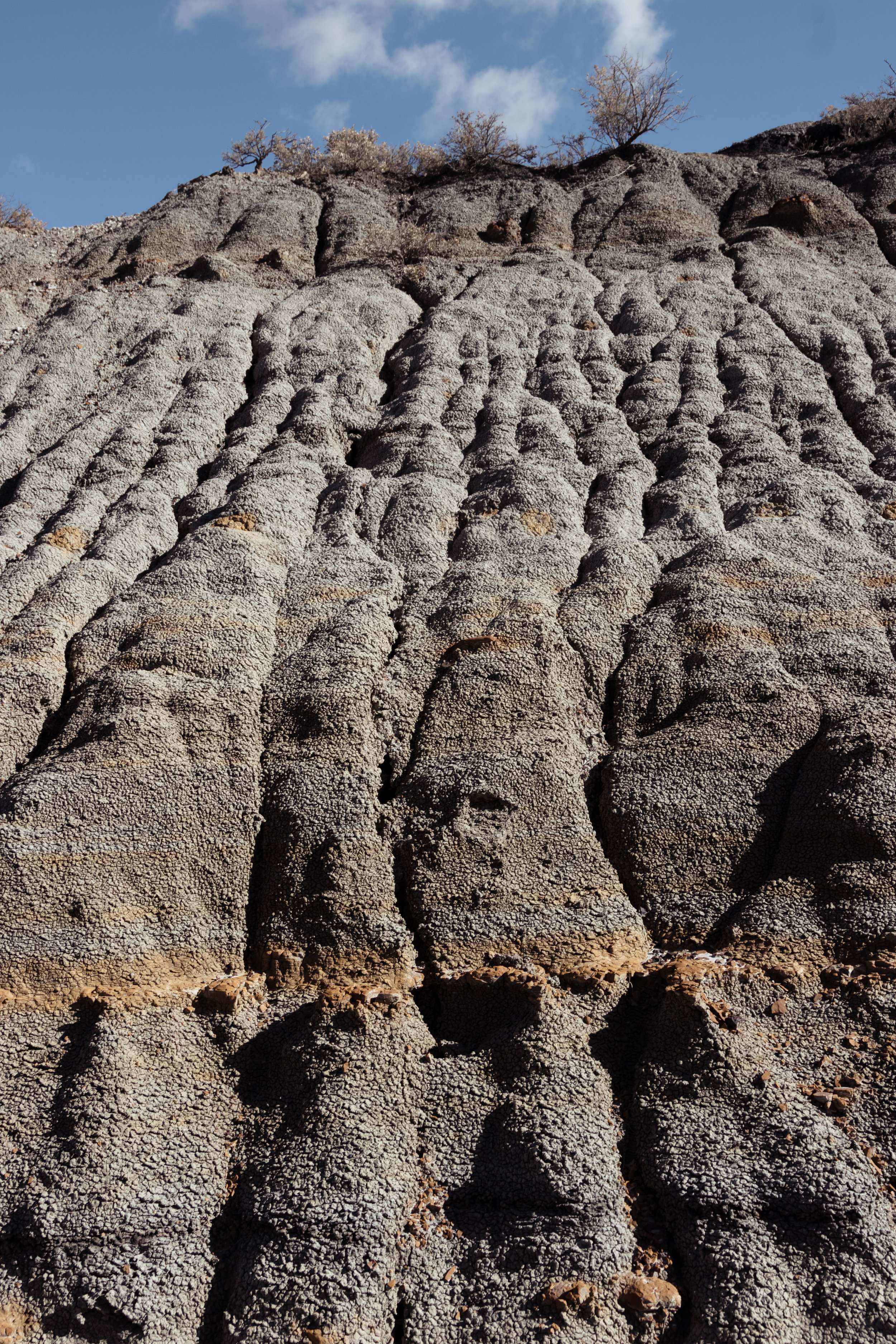Bison in the Fields, North Dakota 2018. Shot on film.
My Itinerary:
Friday Night
7:40 PM - Board flight to Bismarck, ND
10:10 PM - Land in Bismarck, head out to Dickinson
11:40 PM - Arrive in Dickinson, go to bed as fast as possible
Saturday
9:00 AM - Wake up and head out to Theodore Roosevelt National Park (TRNP)
10:00 AM - Arrive at Painted Canyon in TRNP
10:30 AM - Head to park visitor’s center
10:40 AM – 4:00 PM - Explore South Unit
5:00 PM – Sunset - Check out North Unit
10:30 PM - Check into Bismarck, ND hotel
Sunday
5:55 AM - Fly home
Bison on the Open Prairie, North Dakota 2018.
Before I started traveling the globe, if you asked me where I wanted to travel most, North Dakota would not have been my answer. Why would I visit North Dakota? It’s a barren, sparsely-populated state lacking the attractions of other, more remote states (e.g. Montana, Wyoming, Alaska). Frankly, I knew very little of North Dakota and wanted to keep it that way. It’s clearly the lesser of the Dakotas, what more is there to know?
Yet, as I toured more of the country I learned two important lessons. First, there’s a lot more to know and see in the US than anyone could ever know/see, and second, it’s often the places you know very little about that make for the most exciting adventures. Indeed, that had been my experience with South Dakota; prior to visiting, I only knew as much as I learned from my hero, Nicholas Cage, in National Treasure: Book of Secrets. Namely, that the Black Hills contain a secret city of gold not far from Mount Rushmore, the only notable feature of South Dakota. I continued with this belief until I discovered one of the largest herds of bison in the country, two fantastic national parks, and rolling prairies dotted with prairie dog burrows.
“What if North Dakota is better than South Dakota?” I pondered. “What if this whole idea that North Dakota is a grey, flat, wasteland is just an over-exaggeration? Maybe, people just don’t visit North Dakota because they forget even exists.”
Yet, I hesitated to visit; I’d get there eventually, why the rush? Until, one late fall day, I found myself reading random Wikipedia articles (yes, I have an unusual definition of “fun activities to do when bored”). That’s when I discovered that North Dakota houses a national park and the park is named after Teddy Roosevelt. Wikipedia convinced me; now I had to visit. So, one grey and rainy October night, I boarded a plane bound for Bismarck, North Dakota.
Secretly, I hoped that North Dakota and its park were some undiscovered marvels— the nation’s best kept secrets. I could unearth this miraculous Dakota via my single day of exploration and photography. The rest would be history. Fame would sweep me off my feet— I’d be the modern Henry Morton Stanley or David Livingstone. I’d set up some small tourism-based businesses in “the NEW Dakota” that would blossom into a small empire. One day people in North Dakota would erect “the NEW Mount Rushmore”, except all the busts would be me, making goofy faces. Finally, when all was said and done, I’d lean back in my Italian-leather chair, in my Lignum Vitae-lined master library, in my palatial compound overlooking a grand swath of the wild prairie, and smile. In would walk a flight attendant.
“We’re beginning our initial descent into Bismarck,” she’d bark. “In preparation for landing, please raise your seatback, raise your tray-table, and stow any large electronic devices.”
Roads of THRO, North Dakota, 2018. Shot on film.
My nineteenth-century exploratory dreams faded as I awoke in central North Dakota. Curious, I surveyed my new surroundings; the airport contained maybe four gates, the terrain looked like a pancake— flat and tan— and the skyline was illuminated not by buildings or city lights but primarily by the flames of oil refineries. Although not the most favorable first impression, I tried my best to withhold judgement. I didn’t want my experience to be tainted by my own biased preconceptions.
Driving an hour and a half west to Dickinson, ND, we checked-in to our podunk hotel and passed out.
Saturday
Bend in the River, North Dakota 2018.
The sound of an eagle’s cry pierced the pre-dawn sky. Startled by the call of the wild, I scurried out of bed, only to behold the most incredible sunrise I’ve ever seen; bolts of red and streaks of orange danced across an otherwise cotton-candy sky. The sun’s first rays crept slowly around the horizon like a middle-schooler trying to get closer to his date at the dance. Beneath this heavenly light-show, a herd of bison— 3,000-strong— thundered across the golden prairie. Pronghorns leapt in a ballet across the grasslands to a symphony of howling coyotes.
Just kidding. I stumbled out of bed to discover overcast skies, oil wells, and a Burger King. It was like England on a winter day, except without the accents and architecture, and more real-tree camo.
A little voice crept into my mind whispering, “South Dakota’s better...”
Pushing scrutiny aside, I set off for Theodore Roosevelt National Park (TRNP). Even with all my doubts about this obscure Great Plains state, the thought of seeing some bison genuinely excited me. Likewise, I read that a small herd of feral horses roams around the park. I’m not one to ever get carried away with far-fetched, romantic notions, but something about untamed horses really got me excited. I couldn’t wait to blast “Wild Horses” by The Rolling Stones as I (definitely not illegally) rode a feral horse— bareback, of course— off into the sunset. With “Tatonka” and Mick Jigger’s prairie fantasy ahead of me, I sped down the highway to the park.
Driving west from Dickinson towards the South Unit (the southern, larger half of the park), we came across the first sign of life— the Painted Canyon Visitor Center. Pulling into the parking, a frigid rainstorm raked across the prairie, turning an otherwise overcast day into a cold, wet, and overcast day. But that was totally fine and I— being the perfect example of impartiality that I am— continued to withhold judgment about North Dakota. Dampened with a fine October rain, I ventured over to see the titular Painted Canyon. I fully expected something along the lines of the Ausangate Mountains in Peru or a Georgia O’Keefe painting. Even something on par with the sedimentary stacks in Badlands National Park would have cut the mustard. The Painted Canyon has a whole flipping visitor center dedicated in its name, so I expected the spectacular.
Walking down the trail, I approached the stone barrier standing between me and the Painted Canyon. From a distance, this barrier blocked any view of the famed canyon. Moving nearer to the barrier revealed more of the lumpy gray sky until I could faintly see the horizon in the distance. Would the Painted Canyon live up to its name? I paused, reluctant to see how the canyon actually looked. I reminded myself of Plato’s Cave, curiosity compelled me to see the true Painted Canyon, but my current state of ignorance kept me blissful and full of hope. Taking a deep breath, I leaned forward and looked out.
The Painted Canyon, North Dakota 2018.
In front of me lay an incredible field of badlands, great plateaus and valleys built out of layers of myriad stones. The landscape formed a giant topographical map with peaks and troughs demarcated by rigid lines of sediment. Millions of years of erosion and multiple mass extinctions created a vast array of almost impassible crags that faded gradually into the horizon.
Unfortunately for everyone, I’m not much of a geologist. Sure, the rock layers are cool and the formations impressive, but when I hear “painted canyon,” I fully expect something like Jackson Pollock having a field day in the Grand Canyon. That is, Pollock up 2,000-feet in a helicopter with a 55-gallon drum of paint, orchestrating a fleet of other helicopters to all drip their paint everywhere. The Painted Canyon was technically impressive but emotionally underwhelming, much like Roma/Battleship Potempkin/any movie labeled ‘avant-garde’/etc. In short, the Painted Canyon scored well with the critics, but poor with the audience.
I took a step back.
“Okay,” I thought, “so Painted Canyon sucks on a rainy day— no big deal.”
Bison still supposedly roamed the open prairie and I still needed to see most of the park.
“Give North Dakota a chance, you must,” rasped red-neck Yoda.
I returned to the car, thankful to get out of the rain.
The windshield wipers vanquished the downpour of rain as we sped off to our next stop: Medora, North Dakota. With a humongous population of 132 (thanks, Wikipedia!), Medora guards the entrance to TRNP’s South Unit. However, pulling into the “downtown” area, the city looked like it had quadruple the population. Old-timey saloons complete with pistol-grip doorknobs, painted wooden houses, and knick-knack stores lined the streets. In spite of the dreary weather and the extremely obscure nature of the town, Medora exceeded expectations. Albeit a bit kitschy, Medora possessed a certain warmth and small-town charm I never expected to find in the middle-of-nowhere North Dakota.
Opting to save to the pistol-grip saloon for later, we cruised to the national park’s visitor center. Fortunately, traffic was light that day and it took us maybe fifteen-seconds to get to there. In fact, we didn’t even see another car. Stepping over a downed wasps’ nest, we entered your standard national park visitor center, complete with a friendly park ranger. Since we knew next to nothing about the park besides feral horses and bison, the park ranger provided us with a few key suggestions. First, she insisted we check out Buck Hill and the Ridgeline Nature Trail for good views of the South Unit. After reminding us to keep our distance from wild animals, she also recommended Oxbow Bend in the North Unit for sunset. We decided on a highly ambitious plan: we’d circumnavigate the South Unit, looking for views and animals, and if we had time, we’d endeavor to drive an hour to the North Unit.
Leaving the cheerful ranger, we followed “Scenic Loop Drive” around the perimeter of the park. This route took us away from the overlooks and towards the wildlife; we hoped to photograph wildlife until the weather got better and then check out the scenic viewpoints.
Bison in the Grass, North Dakota 2018.
A mile or two down the winding road, we first encountered wildlife near Cottonwood Campground. Nestled in shoulder-height grasses, a small herd of bison meandered towards the pavement. Nappy and gruff, the largest bull lingered behind the others, eyeing our car suspiciously. Apparently deciding that we posed no threat, he joined the rest of the pack across the street. Several calfs ran around excitedly, dashing between the older members of the herd. One even dove under another bison’s legs to escape the nip of a friend.
The scene reminded me of family reunion picnic: kids dashed around the socializing parents, occasionally ramming into Aunt Judy and spilling her drink. Uncle Chuck would sternly tell the kids to go play in the field, but eventually their shenanigans would cause chaos for Grandpa George as he tried to cook. The only real difference between a family picnic and North Dakotan bison was that these rambunctious kids had horns and Grandpa George weighed in around a ton. Also, two of the “family members” humped under a tree.
The Nest Builder, North Dakota 2018.
Now I needed to fulfill my prairie dream. Cruising along Scenic Loop Drive, we scoured for anything scenic. Sadly, the gray skies overhead subdued the already bland landscape. A few miles down the road we finally found something interesting. At place aptly named “Prairie Dog Town”, we found both a sprawling prairie dog colony and, off in the distance, a trio of feral horses. “Wild, wild horses we’ll ride them some day,” rang out in my head. Thanks, Mick Jagger. I couldn’t have asked for a better opportunity to live my prairie dream.
To photograph both parties, I swiveled back and forth. I snapped a close-up of a prairie dog chirping at his neighbor then swung around 180-degrees to take some full-shots of the horses. The pivoting served two purposes: (1) I could photograph both animals (duh) and (2) I could make sure I remained a safe distance away from the horses, which seemed to be stalking me. Every time I turned my back to the horses, they’d jog closer, but when I turned around towards them they’d act uninterested and stop in their tracks. As much as I wanted to fulfill my Great Plains fantasy of riding a wild horse into the sunset to the tune of Wild Horses, I rethought my grand plan. After one look at the muscly horses— six-feet tall at the shoulder—I decided to remain content with photographs. I hummed The Rolling Stones under my breath.
Wild Horse, North Dakota 2018.
In retrospect, the wise and creative solution would have been to walk away from both the prairie dogs and the horses. I could have then used a telephoto lens (and probably some photo-stacking) to frame a prairie dog in the foreground and the horses in the background. However, this idea only came to me as I’m writing this piece and the opportunity has long since passed. Maybe next time.
After an hour or so of wildlife photography, we retreated through the minefield of prairie dog mounds to our car. Although I loved shooting horses and prairie dogs, the cloudy sky did us no lighting favors and we needed to stretch our legs.
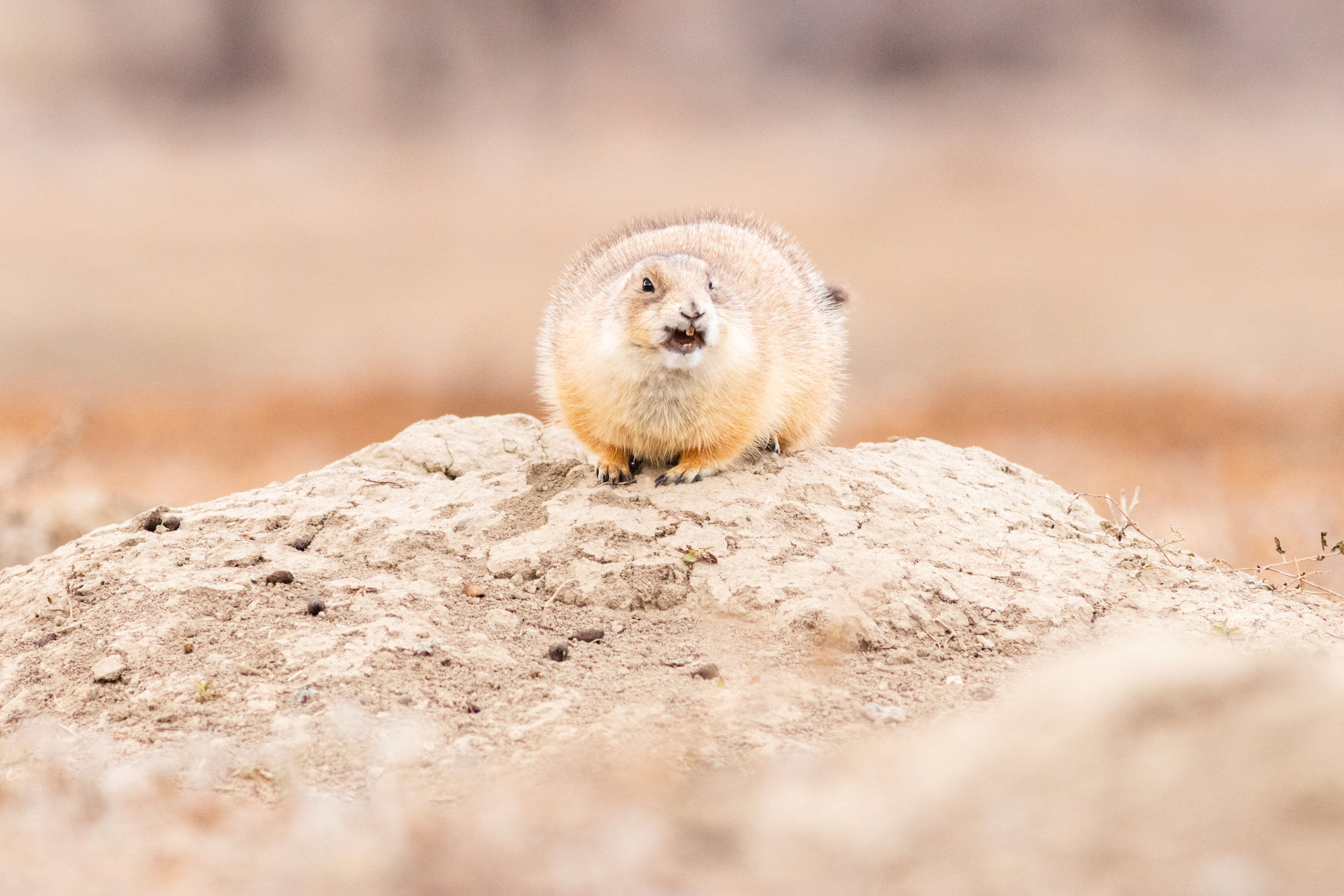
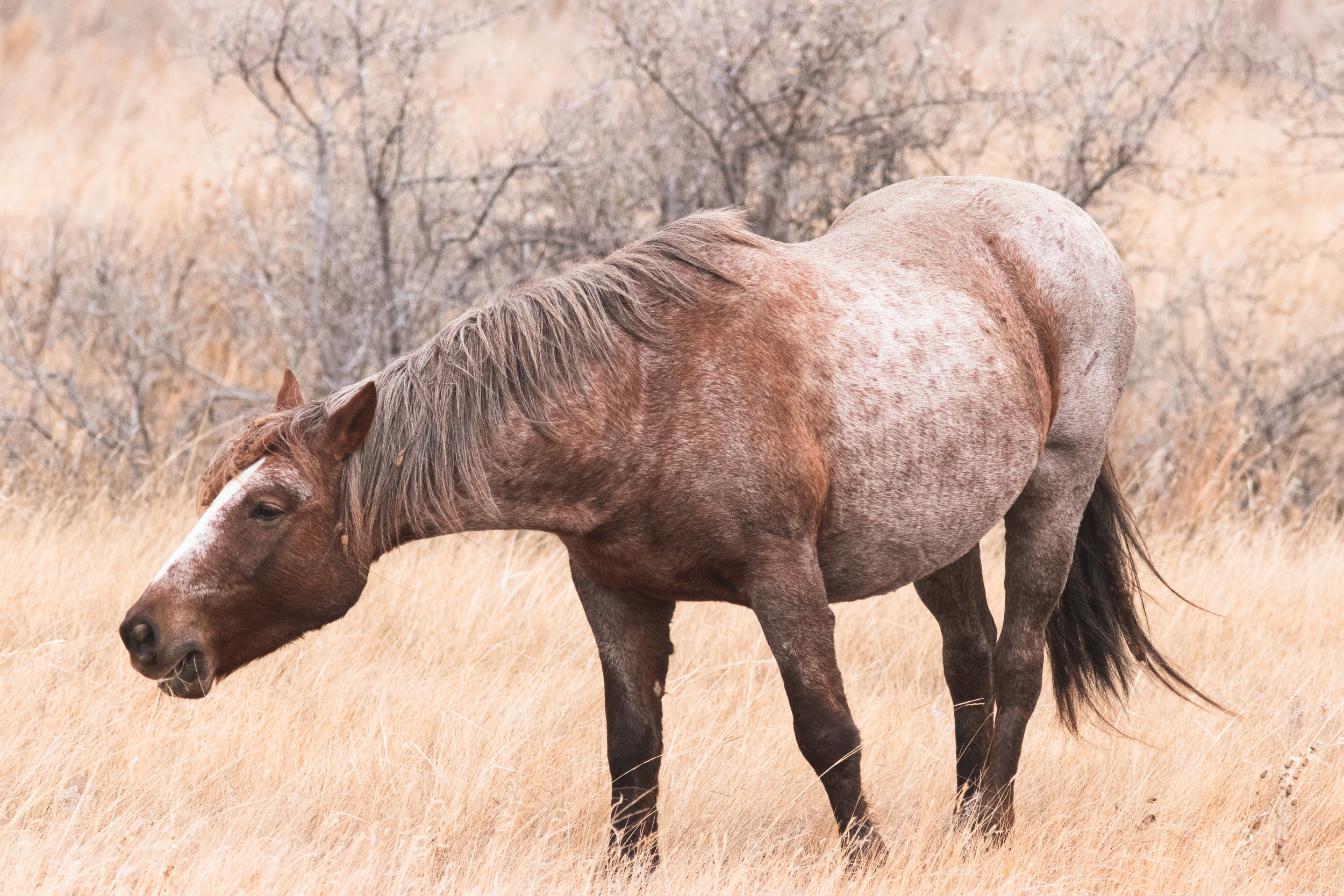
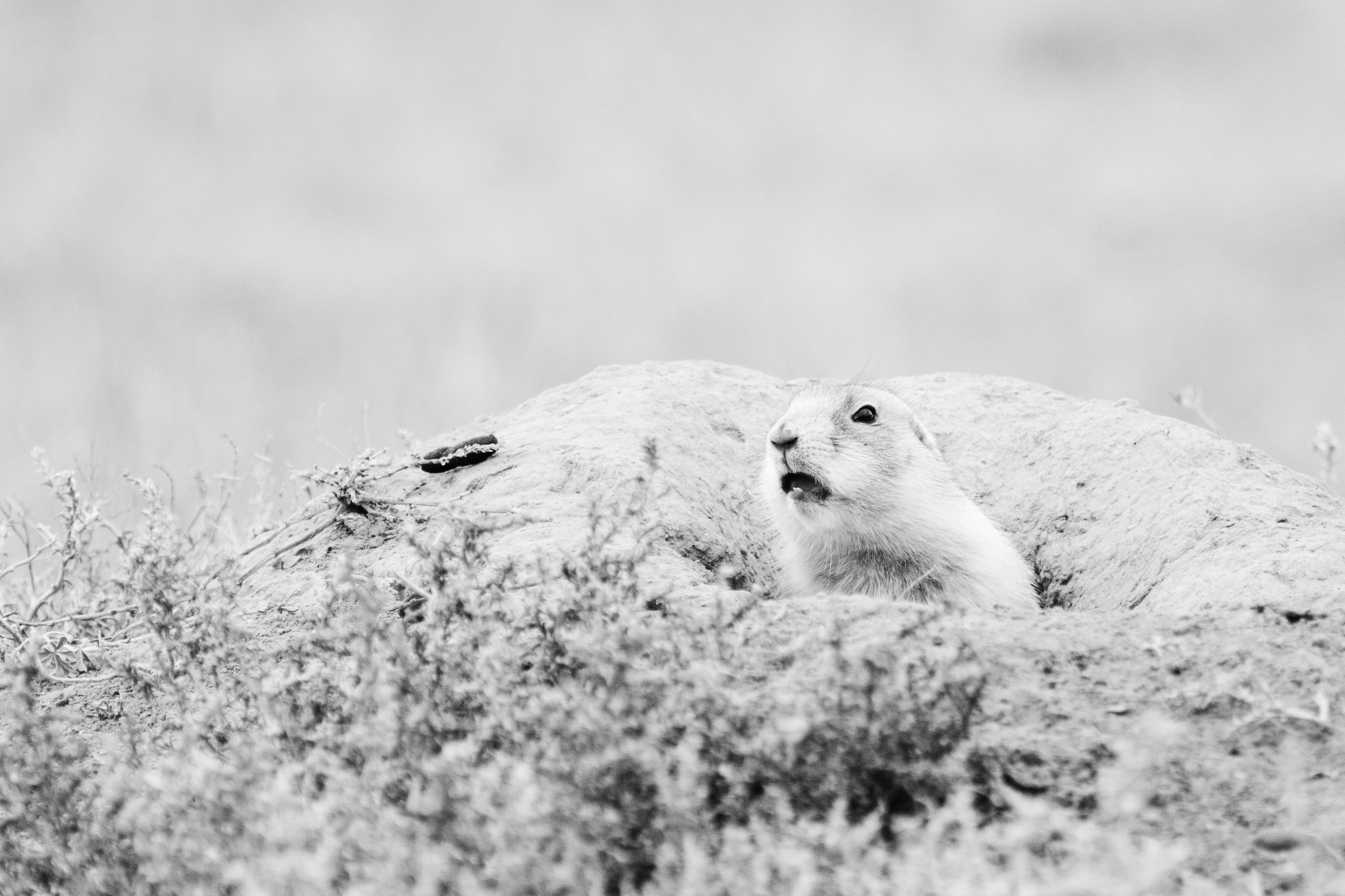
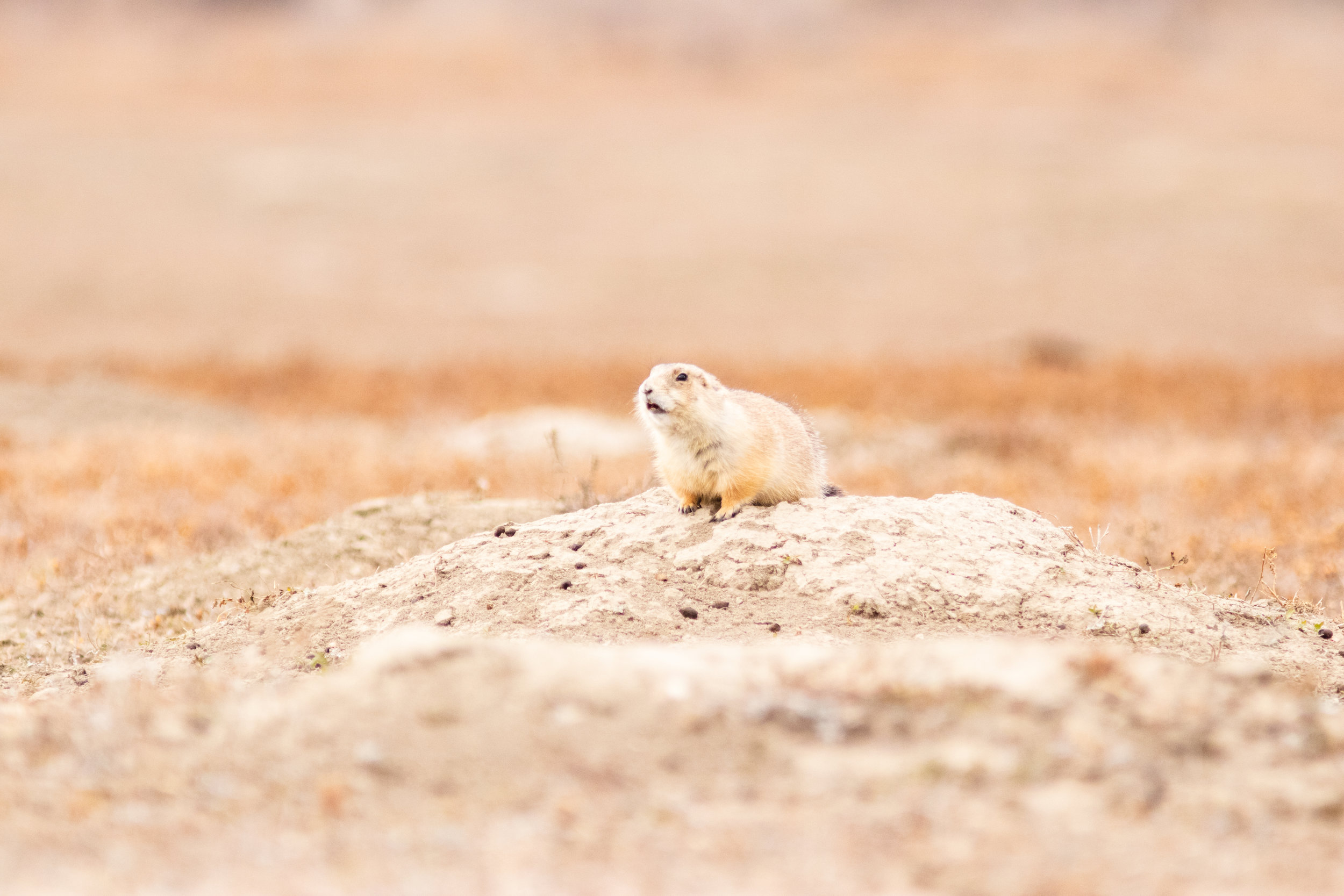
Based on the recommendation from the ranger, we headed east to Buck Hill. The hike itself was only a quarter-mile uphill to a small overlook. However, the wind made the hike challenging and nearly fatal. The sun began to peek through the clouds, bringing with it vicious winds. Standing anywhere besides Buck Hill or the trail leading to the “summit”, the wind was nothing more than a light gust. Yet, as soon as you started up the trail, the air moved across the plains so hard that it would blow a small child half-way to Utah. Indeed, near the top of Buck Hill, the murderous wind nearly knocked me over the edge of the cliff! It might have succeeded, too, had I not promptly flopped down and crab-walked back towards the tail.
Wind Near Buck Hill, 2018
Trail Opposite Buck Hill, North Dakota 2018. Shot on FujiColor Film.
Shuffling back towards this mortal coil and the safety of the trail, I reminded myself of the history of the park. The Mandan, Hidatsa, and Crow tribes all used to call the Theodore Roosevelt National Park area their home. Standing on top of Buck Hill with the wind trying to kill me gave me a feeling of unease. Maybe I’ve watched too many movies; I could only imagine that some ancient Indian spirit didn’t want us there. After all, the wind only really hit you at the very top of the hill— it was nonexistent walking up the trail or the surrounding area.
Following our potentially lethal run-in with an angry Indian wind spirit, we found ourselves at a loss regarding how to proceed with the rest of the day. The sun would start setting in an hour or so and we hadn’t found a great spot for sunset. The park ranger recommended Oxbow Bend in the North Unit as a good sunset location, but that required nearly an hour’s drive. We had a dilemma: risk missing sunset entirely while trying to get to the North Unit or could stick around the South Unit and hunt for more prairie dogs and wild horses. Feeling adventurous, we opted for the North Unit.
About an hour later, we entered Theodore Roosevelt National Park’s “North Unit”, a small, remote section of the park. Driving down the lone road to Oxbow Bend, I really came to appreciate the beauty of North Dakota. The sun entered the golden hour, and the beige grassy hills shimmered shades of gold. Numerous bison dotted the landscape, as did herds of pronghorn and mule deer.
Flirty Ram, North Dakota 2018.
Stopping briefly to photograph from our mobile blind (aka car), we got quite distracted when a small band of bighorn sheep crossed our path. After my experience last year with bighorns in South Dakota, they’ve quickly become one my favorite animals. We took our time photographing them as the sun rested on the horizon. The ram of the group trotted past each of the females, bumping into some and licking others. As they say: a ram in the streets but a freak in the fields.
All these animal distractions delayed our journey. By the time we got to the Oxbow the sun had nearly disappeared; only a bit of light lingered to illuminate the distant hills. Despite missing the apex of sunset, the scene at the Oxbow was nonetheless charming. The banded rocks of the badlands reflected the gold light and absorbed the blue shadows. Cutting through the plains, the silvery waters of the Little Missouri rushed around the curve of the Oxbow.
I finally came to appreciate the understated charm of North Dakota. The rocky hills weren’t as towering as those in South Dakota, the water not as powerful as the “big” Missouri River, and the wildlife wasn’t as plentiful as in Custer State Park or Badlands National Park. However, the setting sun over the Oxbow Bend possessed a pedestrian beauty. North Dakota isn’t baroque or garish, its beauty rests in its many simple details. If South Dakota is Led Zeppelin then North Dakota is Miles Davis; keeping things cool and subtle, while maintaining a wild, magnificent spirit.
Double Exposure in the North Unit, 2018
Sunday
Groggily perusing through the gift store of the Bismarck airport, I felt pleasantly surprised by my experience in North Dakota. To celebrate, I picked up a shirt that really captured my time in “the lesser of the Dakotas”: in the foreground, a wild horse with a cowboy rider rears up as a lightning bolt strikes from pillowing thunder clouds behind it—almost like my prairie dream.
